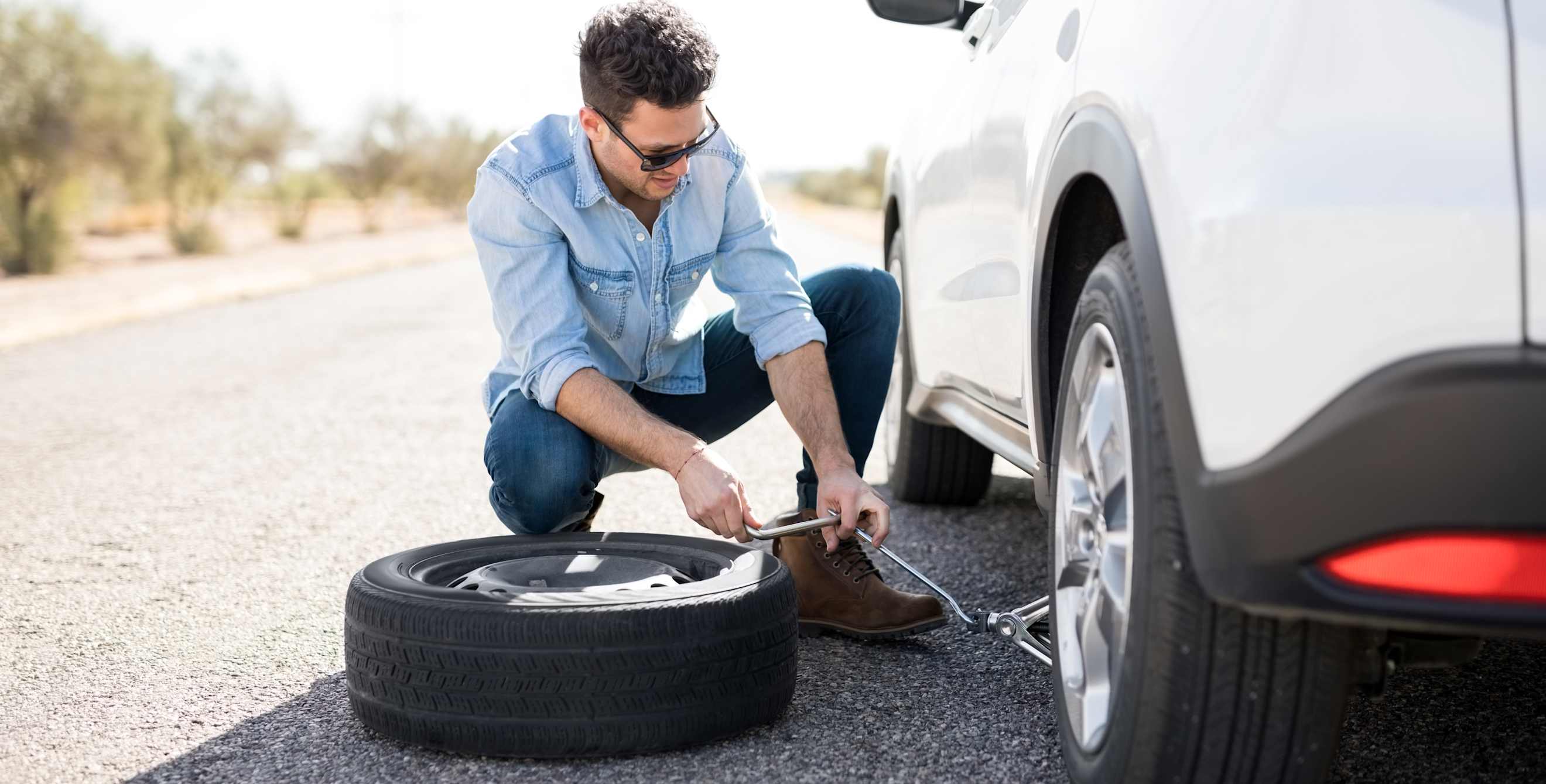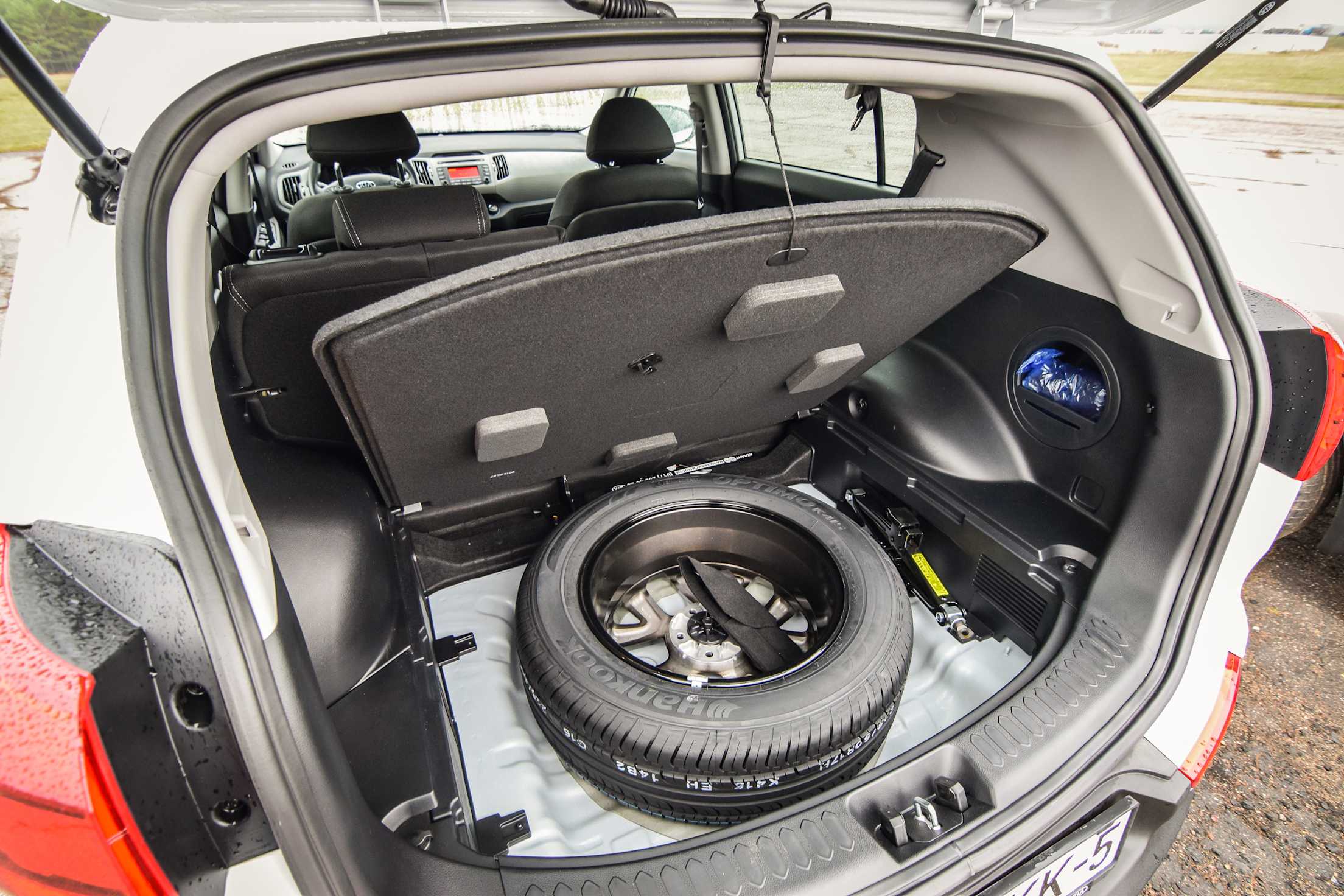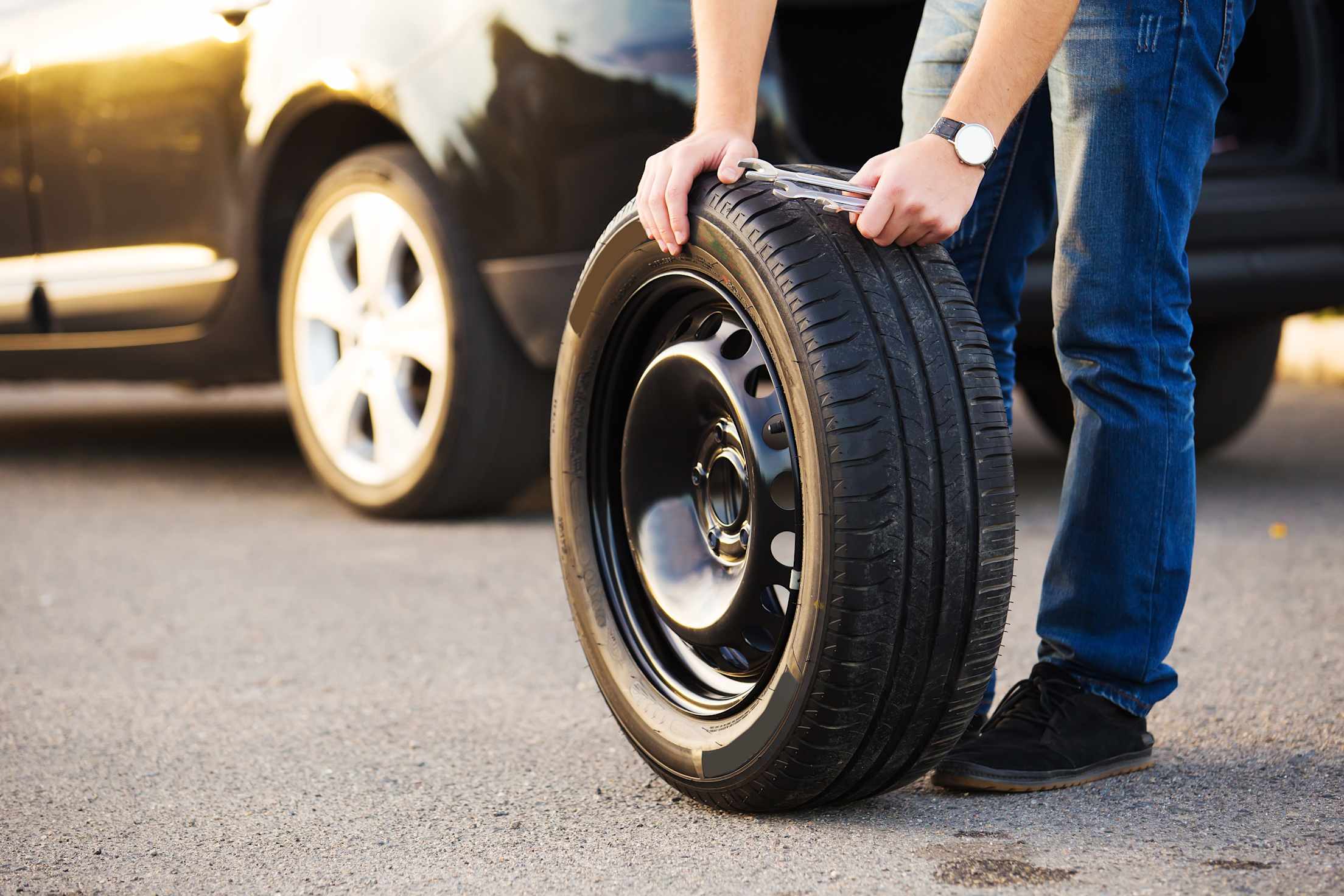
What You Need to Know About Your Car's Spare Tire
Get answers to common spare tire questions, from how far you can drive to how to maintain it.

When was the last time you thought about your spare tire? Do you know where it’s located, or if your car even has one? While handy in time of need, a spare tire still requires regular maintenance and careful use. Here’s what you need to know about your spare tire, including how to care for it and where to purchase one.
Q: Does every car automatically come with a spare?
Around a third of new cars sold today do not come with a spare tire. Some manufacturers have removed the spare tire to cut costs, create more space, and reduce the weight of the vehicle. Instead, they either install run-flat tires, a type of tire that can be driven on for a short time (typically less than 50 miles) after a puncture so you get to an auto shop or find a safe place to pull-over, or include an emergency tire sealing kit (such as the popular Fix-a-Flat).
“A tire sealant kit is a temporary solution—the vehicle should be taken to a repair facility to have the tire inspected and repaired or replaced as soon as possible,” says David Bennett, Repair Systems Manager at AAA. The tire sealant will not work in case of a blowout or sidewall damage. Tire sealant has an expiration date and should be replaced every 3 to 5 years.
Others come with no alternative in case of an emergency.
If you’re uncertain about your vehicle or rental car having a spare, there is an easy way to check. First, look in your trunk, under the floorboard. If your vehicle has a donut, it’s located there. Otherwise, the most common place for a full-size spare tire is underneath your vehicle. You can ask your mechanic to look the next time you’re in the shop, or get down on the ground and take a peak—you won’t miss it. There are also cars that have the spare tire affixed to the trunk.
Q: What should I do if my car doesn’t have a spare tire?
You can purchase your own, but it can be a difficult option as your vehicle has no built in place for a spare, or the tools to replace it, so you’ll be sacrificing cargo space. You can buy a tire sealant kit and a portable tire inflator, but tire sealant should only be used as a last resort, as it can make the tire unrepairable or damage your tire pressure sensor. You could also sign up for roadside assistance, included with your AAA Membership, and ask to be towed to the nearest tire repair shop.

Q: What types of spare tires are common?
A: If your car has a spare tire, it will usually be one of two types: a full-size spare tire, which is just like the regular wheels and tires on your car, or a temporary spare tire, also known as a donut. The donut is a tire that is relatively narrow and smaller than your car's standard tires. Generally speaking, donuts are common in smaller cars and SUVs, while full-size spares are more common in larger SUVs and trucks. This is by no means a rule, and many exceptions exist.
Q: Can I drive like I usually do on a spare tire?
A: If your car has a full-size spare tire, then yes, you can continue driving like you normally would. However, keep in mind that you no longer have an emergency tire in the event of another tire malfunction. Additionally, if installing tires isn’t something you’re familiar with, you should ask your mechanic to make sure the full-size spare tire is secured properly to avoid possible catastrophic failure.
You need to drive very carefully with a donut spare. “Temporary spare tires are just that, temporary. They are designed for short distances to allow you to drive your vehicle to a repair facility where the damaged tire can be repaired or replaced,” Bennett says.
When you’re driving in a car with a temporary tire, it’s important to never drive more than 50 miles an hour (or less if your manual or tire recommends a lower top speed). Since highways tend to require driving at 55 MPH or higher, avoiding highway driving is prudent. If you cannot avoid a highway or freeway, turn on your hazard lights, stay in the far right lane, don’t exceed the speed limit listed on your tire, and get off the highway as soon as you can. Your driving distance should also be limited to 50 miles total on the spare.
When driving on a temporary spare tire, you should also be aware that it may trigger some warning lights on your dashboard, such as the ABS light and tire pressure light. Additionally, “Vehicle performance will be reduced, including vehicle stability, braking, and traction. Drivers should reduce their speed and drive more cautiously,” says Bennett.
Q: How do I install a spare tire?
A: Your vehicle’s owner's manual will include detailed directions on how to remove the damaged wheel and tire and install the spare. It’s important to read these instructions, as there may be particular nuances to your vehicle. When you buy or lease a new or used vehicle, it is wise to do a dry run in a safe area so you are prepared to replace it should you need to. Vehicle-specific YouTube tutorials can also be a helpful way to learn how to install your spare tire, as long as you still carefully read the instructions.

Q: How do I take care of my spare tire?
In the event of a tire emergency, it’s critical that your spare is in excellent condition. Your spare tire requires regular maintenance, just like the rest of your tires. Set a reminder to check and adjust your spare’s tire pressure and inspect its physical condition monthly. You’re looking for any damage, rust on the wheel, and/or dry rot on the rubber. If your tire is under your car, ask your mechanic to check it at every service to ensure there is no damage or excessive corrosion and that the hardware, brackets, and chains can easily be loosened.
Your spare tire, whether a full-size spare or a temporary donut, should be replaced every ten years. To determine if yours should be replaced, find the DOT number on the tire and use the last four digits to determine the age of the tire. The first two are the week of manufacture, and the last two are the year of manufacturer. If you wind up driving more than 50 miles on the temporary spare tire, be sure to carefully inspect it and replace it if needed.
Q: Where can I buy a spare tire?
The best place to buy a temporary spare tire is your dealership's parts department. Since the temporary spare tire is rarely replaced, it’s unlikely you’ll find the tire at most tire stores. For a full size spare tire, just the tire itself will need to be replaced, and it can be done at your local mechanic shop.
Get quality auto repair service from certified technicians and the brand you trust.